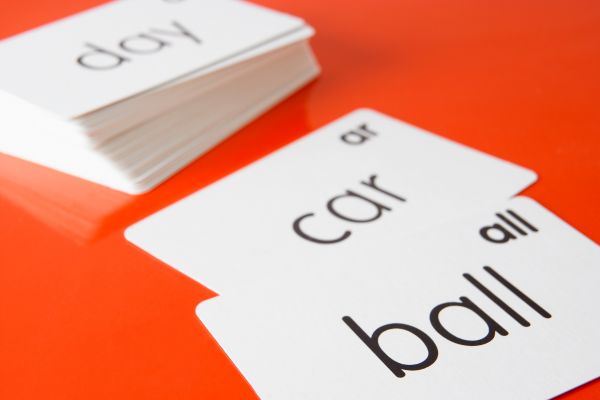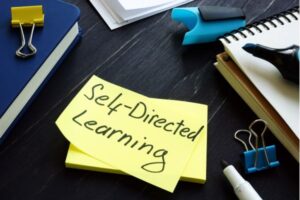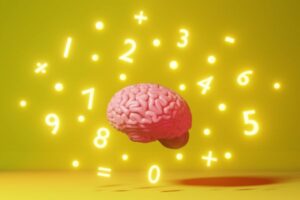In today’s fast-paced world, where information is abundantly available, the art of effective studying has become even more crucial. Students and learners of all ages face the challenge of processing vast amounts of data, retaining essential knowledge, and applying it to real-life situations. Amidst various study techniques and tools, one method that has stood the test of time and proven to be a reliable ally in the quest for knowledge is the humble flashcard.
Flashcards, though seemingly simple, hold a remarkable power that goes beyond their unassuming appearance. They have been an integral part of the learning journey for generations, and their continued relevance in modern education speaks to their effectiveness. The concept of flashcards can be traced back to the early 19th century when they were used to teach languages, geography, and other subjects. Today, in the digital age, flashcards have evolved to encompass a wide range of subjects and formats, from traditional paper cards to interactive digital versions.
The essence of flashcards lies in their ability to stimulate active recall – a cognitive process that plays a central role in memory consolidation and long-term retention. Unlike passive learning methods, where learners absorb information without actively engaging with it, flashcards require learners to actively retrieve information from memory, reinforcing neural connections and enhancing their ability to recall the knowledge later on.
In this article, we will explore the various facets of using flashcards for effective studying. We will delve into the science behind their effectiveness, learn how to design well-structured flashcards, and understand how to incorporate techniques such as spaced repetition and mnemonic devices to boost learning outcomes. Moreover, we will delve into the importance of interactive study sessions and how leveraging technology can take flashcard-based learning to new heights. Whether you are a student striving for academic excellence, a professional aiming to upskill, or simply someone eager to expand your knowledge, mastering the art of using flashcards can be a game-changer in your learning journey. So, let’s embark on this exploration of how to harness the full potential of flashcards for an enriching and effective study experience.
Understanding the Power of Active Recall
One of the primary reasons flashcards are so effective is their ability to promote active recall. Unlike passive study methods, such as re-reading notes or textbooks, active recall involves retrieving information from memory without any aids. When you use flashcards, you actively try to remember the information on the front side before flipping it over to check if you were correct. This process stimulates your brain to work on memory retrieval, strengthening the neural pathways associated with the learned content.
To utilize active recall effectively with flashcards, create your flashcards with concise questions or prompts on one side and the corresponding answers on the other side. When reviewing, attempt to answer the question before looking at the answer. By engaging in this process repeatedly, you reinforce your memory and make the information easier to recall during exams or when needed.
Designing Effective Flashcards
Designing well-structured flashcards is crucial for optimizing your studying experience. The key is to keep the content concise and focused on a single concept. Avoid the temptation to include too much information on a single card, as it can lead to cognitive overload. Instead, break complex topics into smaller, manageable chunks and create separate flashcards for each subtopic.
Furthermore, consider using visual aids on your flashcards when appropriate. Images, diagrams, and charts can enhance your understanding and memory retention, especially for subjects that involve processes or spatial relationships. Color-coding can also be beneficial to associate related information and create mental connections. Keep your flashcards neat, organized, and easy to carry, so you can review them conveniently wherever you go.
Incorporating Spaced Repetition Techniques
Spaced repetition is a learning technique that involves reviewing information at increasing intervals over time. This method takes advantage of the spacing effect, which suggests that long-term retention improves when learning sessions are spaced out rather than massed together. To implement spaced repetition with flashcards, organize them into different decks based on the difficulty or familiarity of the content.
As you review your flashcards, separate them into two groups: those you answered correctly and those you had difficulty with. Focus more on the challenging cards and review them at shorter intervals, while the easier ones can be revisited less frequently. There are various spaced repetition apps and tools available that can help you manage your flashcards and optimize your study schedule.
Using Mnemonic Devices and Memory Techniques
Mnemonic devices and memory techniques are powerful allies when it comes to memorizing complex information. These techniques leverage associations and patterns to facilitate memory recall. When creating flashcards, try to incorporate mnemonic devices such as acronyms, rhymes, or visualization techniques to help remember specific details or lists.
For instance, if you’re studying the order of planets in the solar system, you can use a mnemonic like “My Very Educated Mother Just Served Us Noodles” to remember Mercury, Venus, Earth, Mars, Jupiter, Saturn, Uranus, and Neptune. With flashcards, you can have the keyword on one side and the associated mnemonic on the other, reinforcing your memory and making the information more memorable.
Engaging in Interactive Study Sessions
Studying with flashcards doesn’t have to be a solitary activity. Engaging in interactive study sessions with peers or study groups can be incredibly beneficial. During these sessions, you can exchange flashcards, quiz each other, and discuss challenging concepts collaboratively. Explaining concepts to others not only reinforces your understanding but also helps you identify any knowledge gaps or misconceptions.
Additionally, you can use technology to create digital flashcards and engage in virtual study sessions with classmates or friends. Online platforms allow you to share flashcards, track progress, and even compete in friendly learning games, making the studying process more enjoyable and effective.
Conclusion
In conclusion, flashcards have proven to be an indispensable tool for effective studying and learning. Their simplicity belies the profound impact they can have on memory retention, comprehension, and academic success. Throughout history, from traditional paper cards to modern digital versions, flashcards have been a constant companion to learners of all ages, helping them navigate the vast seas of knowledge with greater ease.
The effectiveness of flashcards lies in their ability to engage the brain in active recall, a cognitive process that strengthens memory pathways and facilitates the transfer of information from short-term to long-term memory. By regularly using flashcards, learners can optimize their study sessions, making the most efficient use of their time and effort. Whether they are preparing for exams, mastering new skills, or deepening their understanding of complex subjects, flashcards provide a reliable and versatile method to reinforce learning.
Designing effective flashcards is an art that requires careful consideration of content and organization. Breaking down complex topics into bite-sized chunks and incorporating visual aids not only enhances memorization but also fosters a deeper understanding of the subject matter. Moreover, the use of mnemonic devices and memory techniques adds a layer of creativity and fun to the learning process, making it more engaging and enjoyable.
Spaced repetition, another key element of flashcard-based learning, optimizes memory retention by strategically scheduling review sessions. This technique harnesses the spacing effect, allowing learners to revisit challenging material more frequently while gradually decreasing the frequency of reviewing easier concepts. As a result, the knowledge becomes more firmly ingrained in the learner’s memory, ready to be accessed whenever needed.
Furthermore, the collaborative nature of flashcards makes learning a communal experience. Interactive study sessions with peers or study groups promote knowledge sharing, critical thinking, and constructive discussions. Explaining concepts to others not only reinforces one’s own understanding but also helps identify knowledge gaps and areas for improvement.
In today’s digital age, technology has further expanded the potential of flashcards. Digital flashcard platforms offer features such as progress tracking, sharing options, and gamification, making the learning process more dynamic and motivating. Embracing these technological advancements can further enhance the efficacy of flashcards as a study tool.
As we navigate the complexities of the modern world, where information is abundant and continuous learning is essential, mastering the art of using flashcards remains a timeless and valuable skill. By incorporating active recall, well-structured design, spaced repetition, mnemonic devices, and interactive study sessions, learners can unlock the full potential of flashcards and maximize their educational journey.
In the pursuit of knowledge, let us not underestimate the power of this simple yet potent tool. Whether we are students, professionals, or lifelong learners, the art of using flashcards will continue to serve as a guiding light, illuminating the path to deeper understanding, enhanced retention, and lasting success in our academic and intellectual endeavors. So, let us embrace the humble flashcard as a steadfast companion in our quest for knowledge, as we forge ahead toward a future enriched by learning and personal growth.



